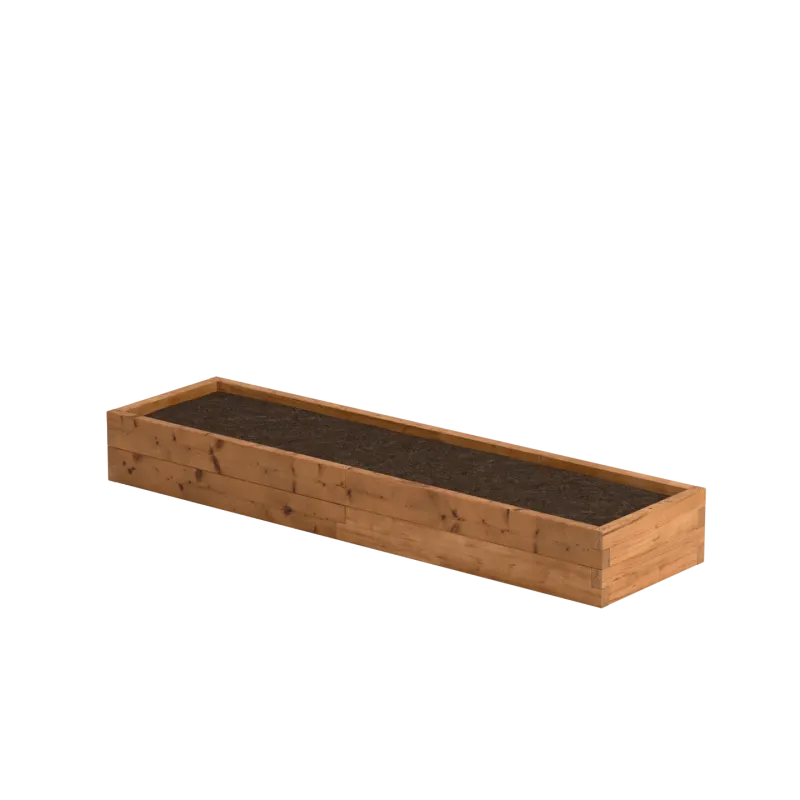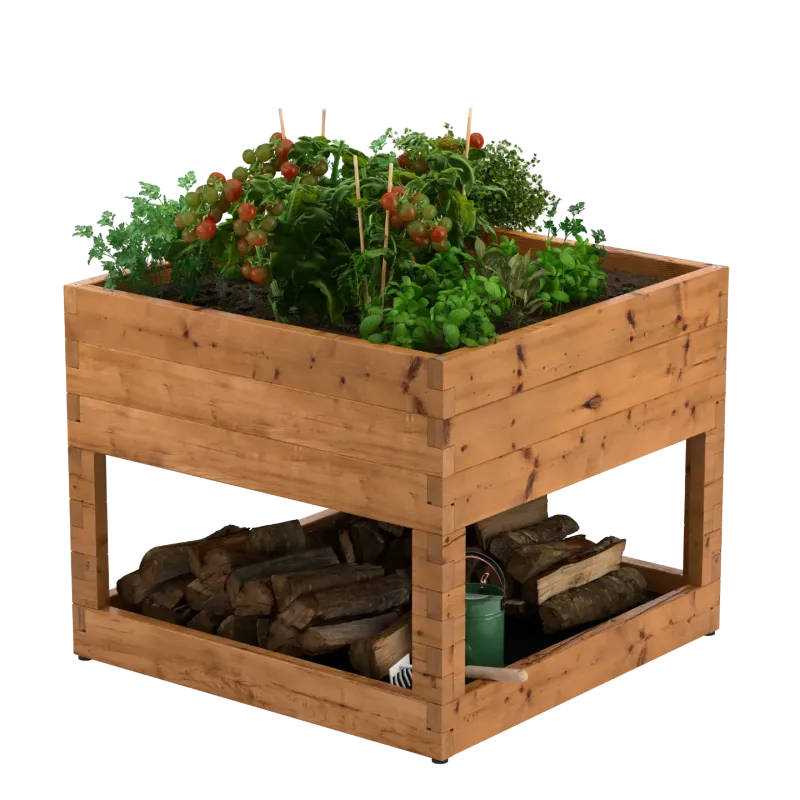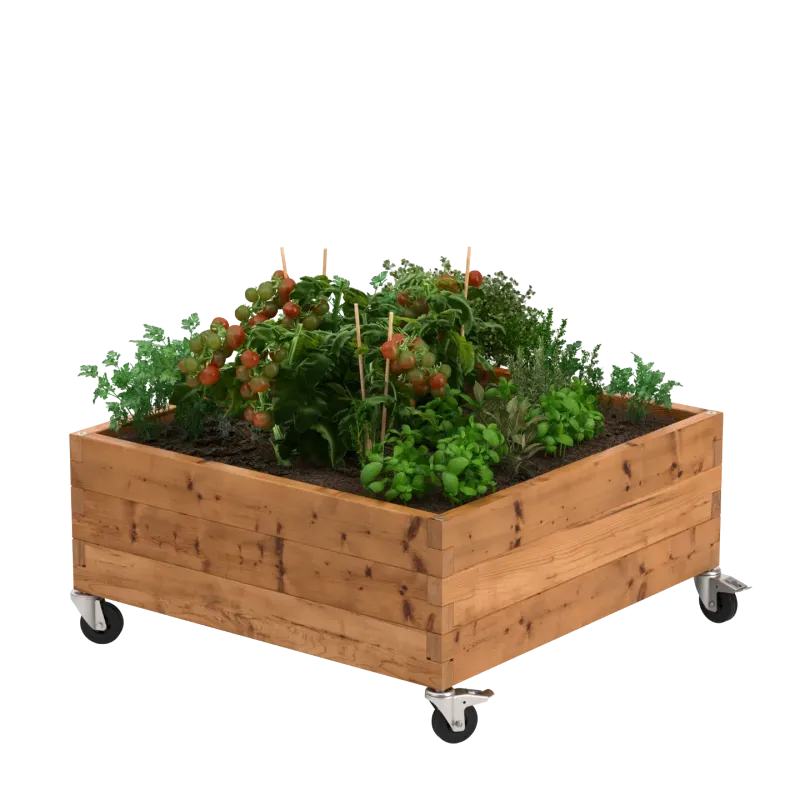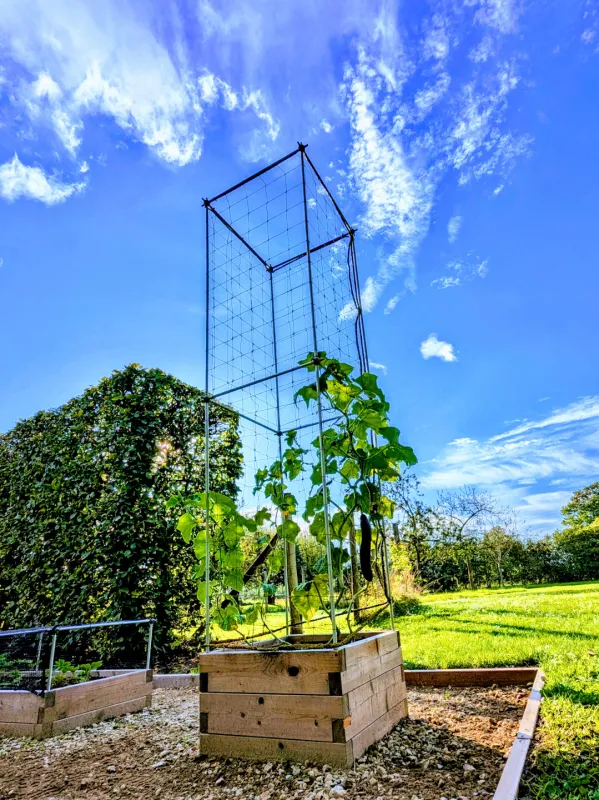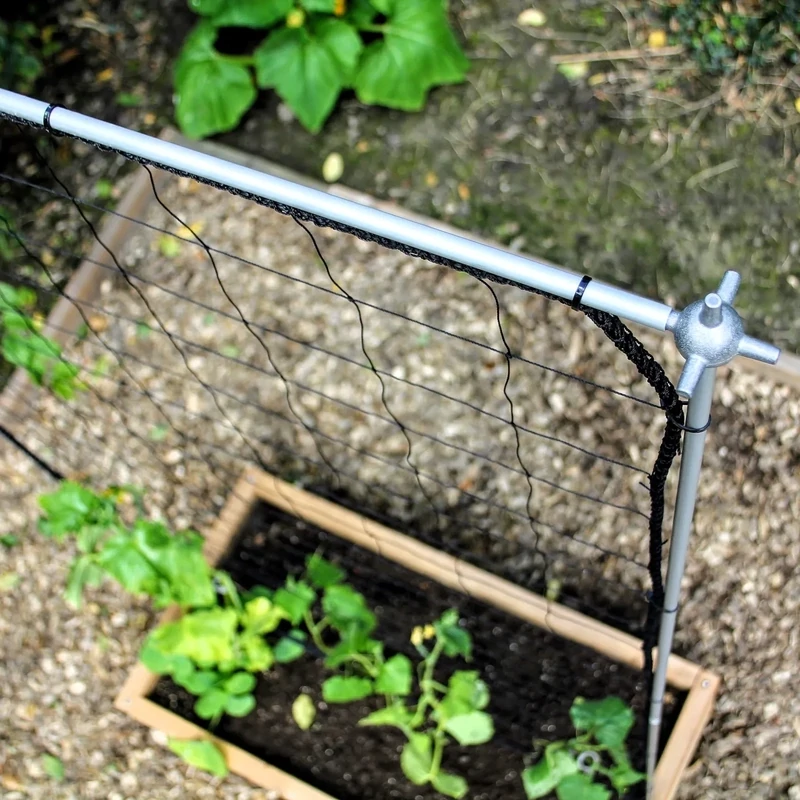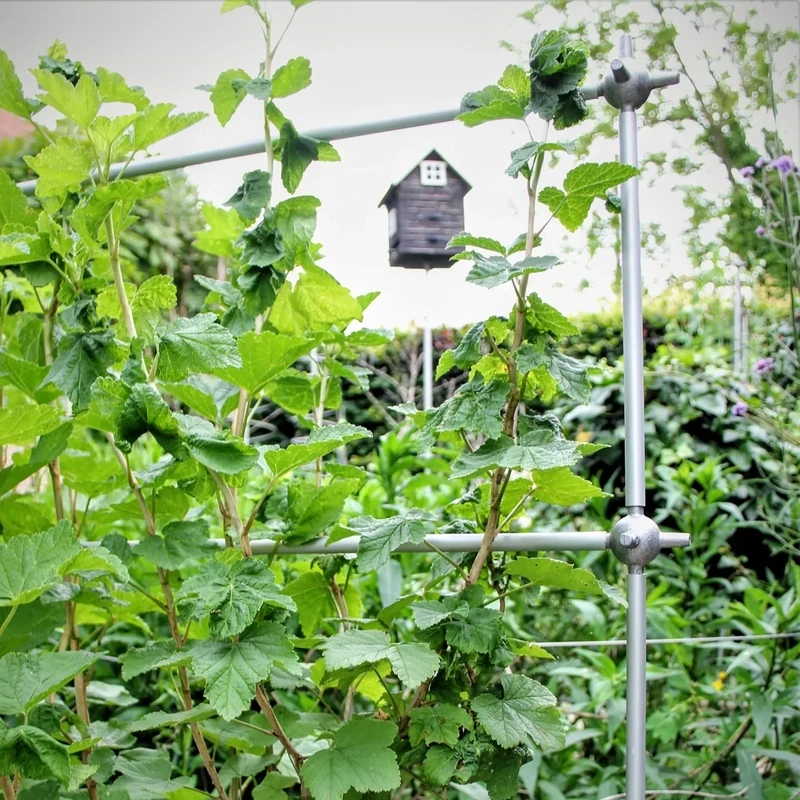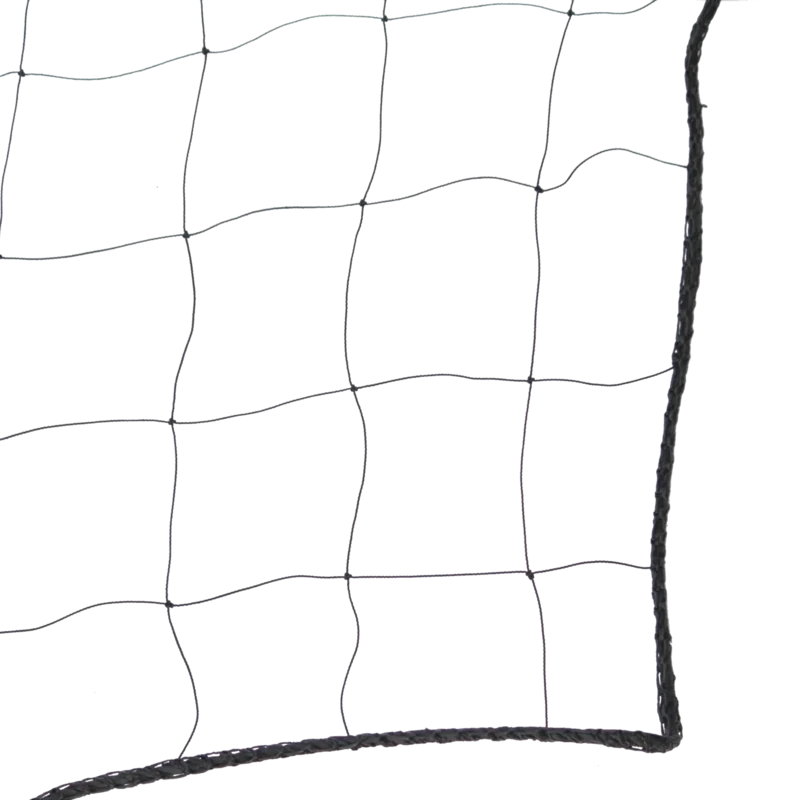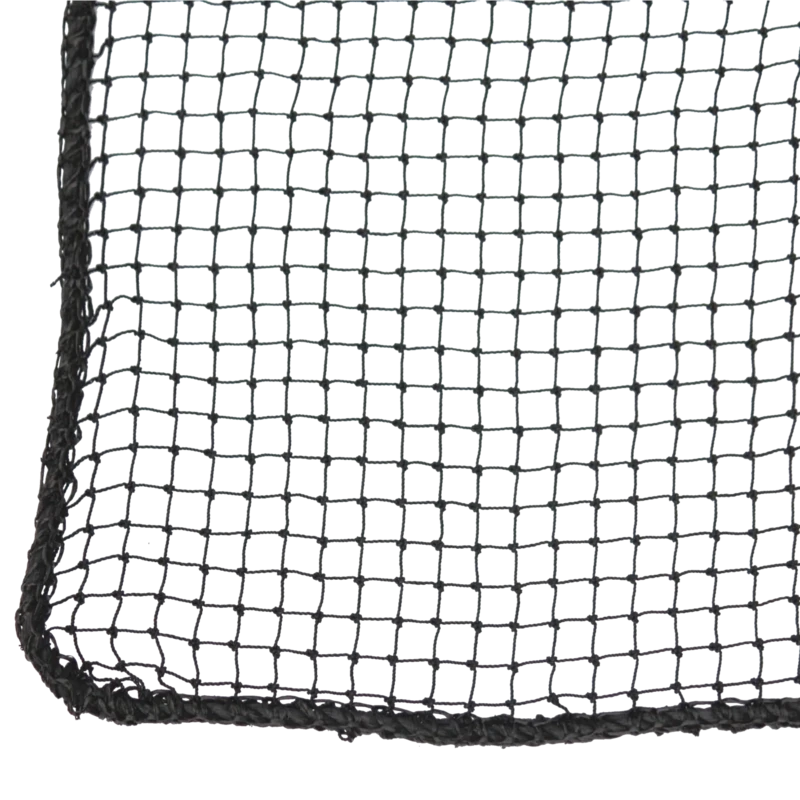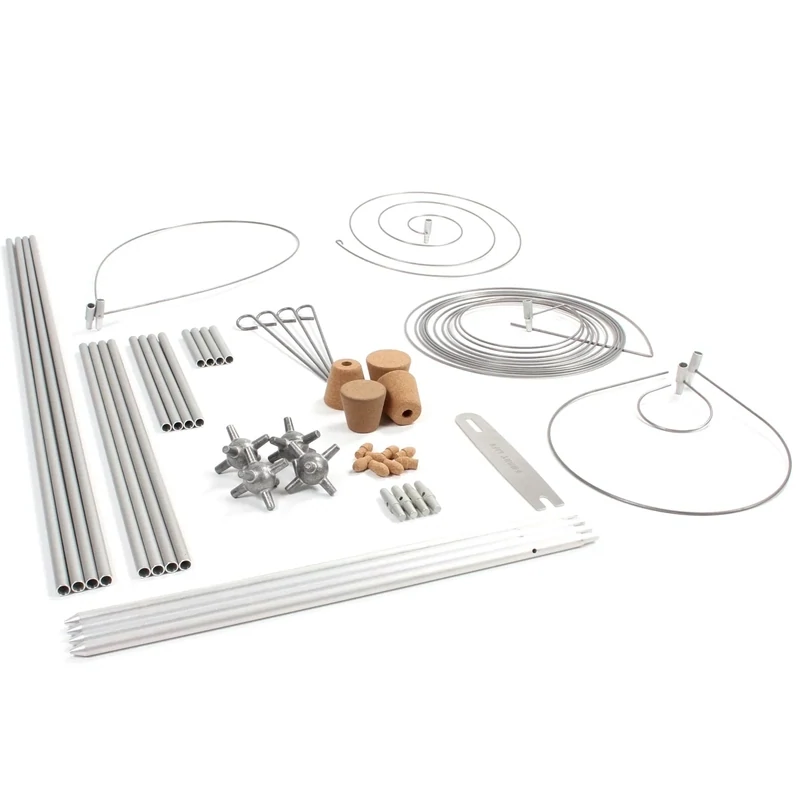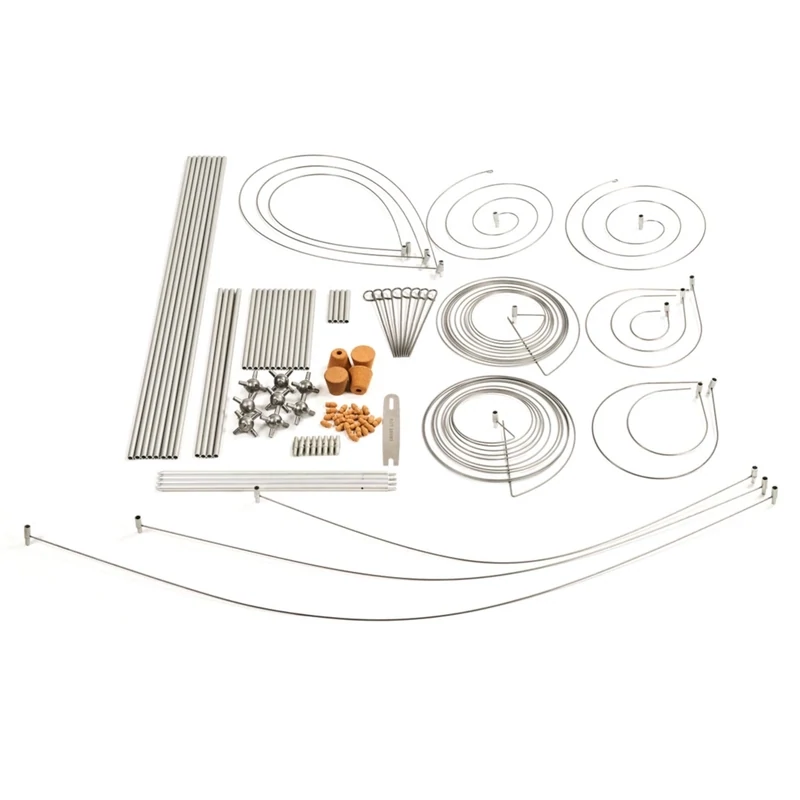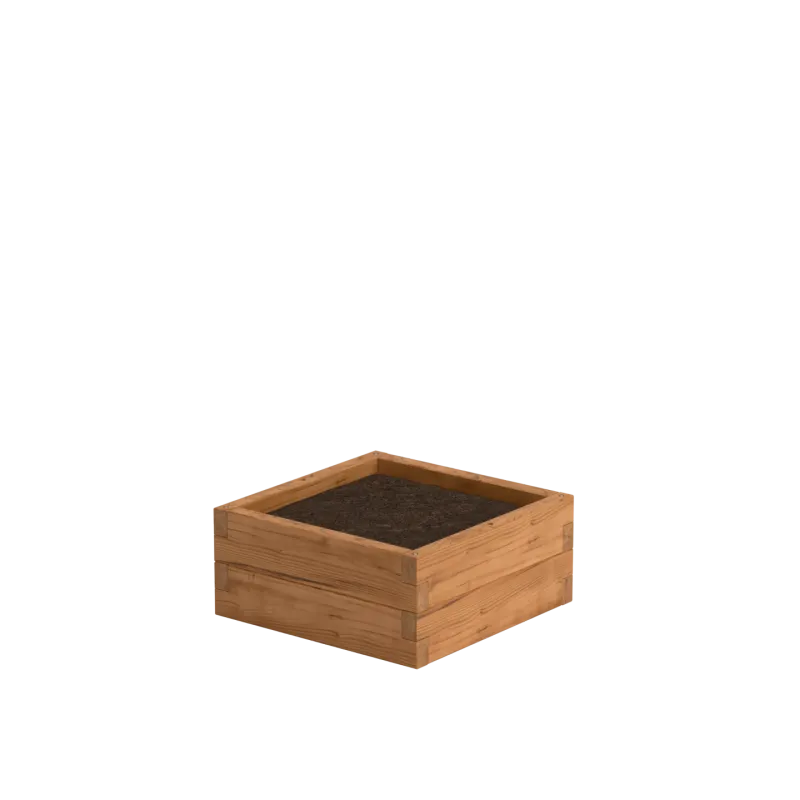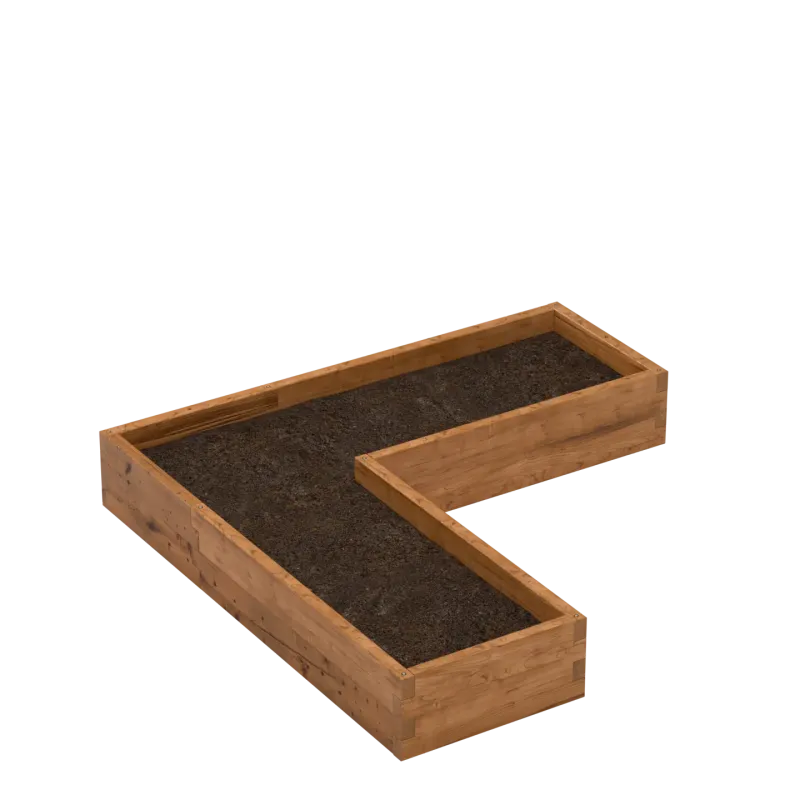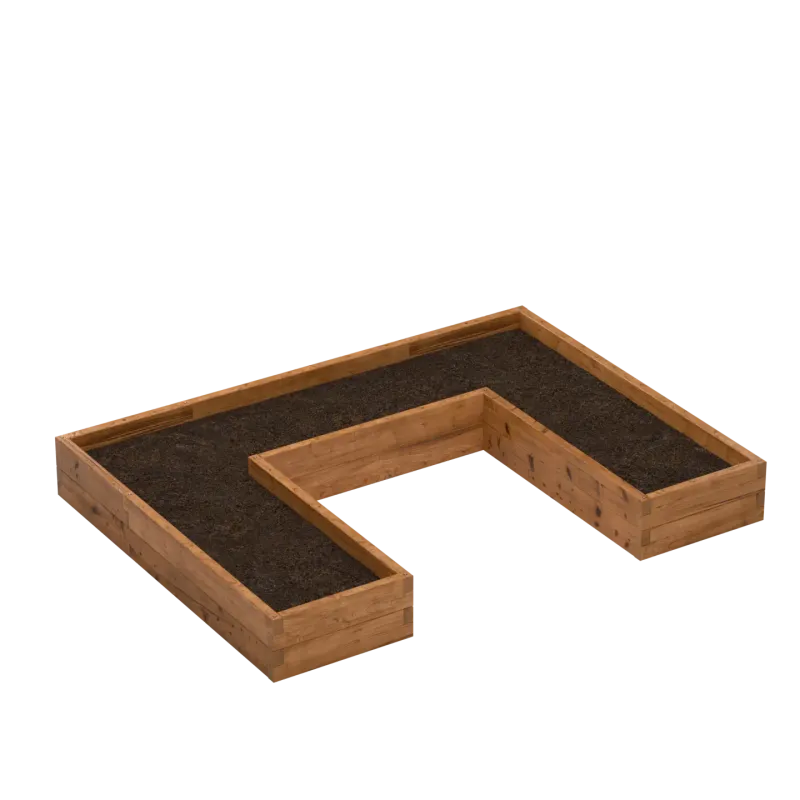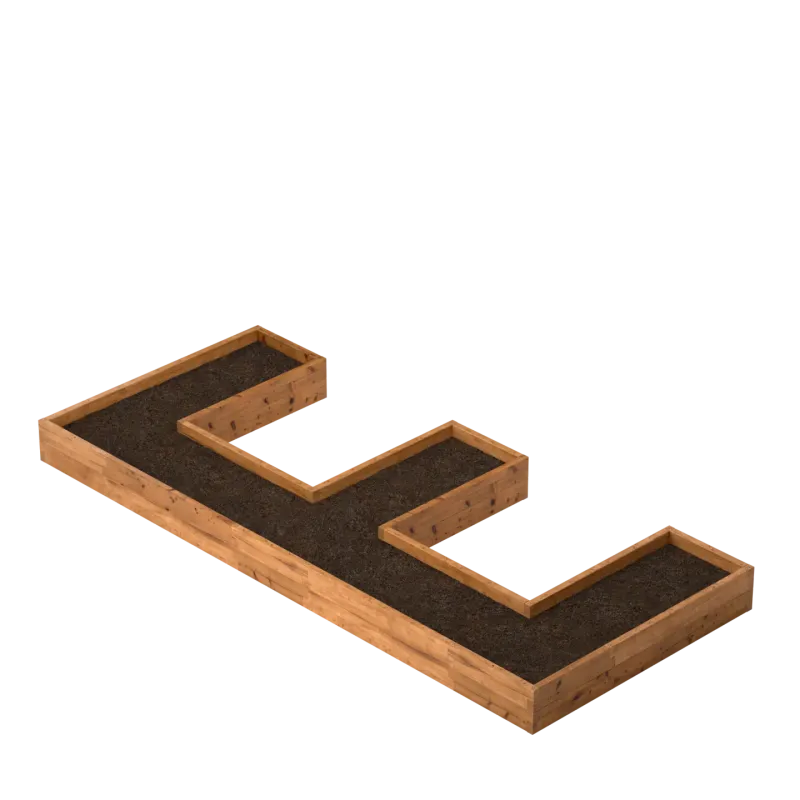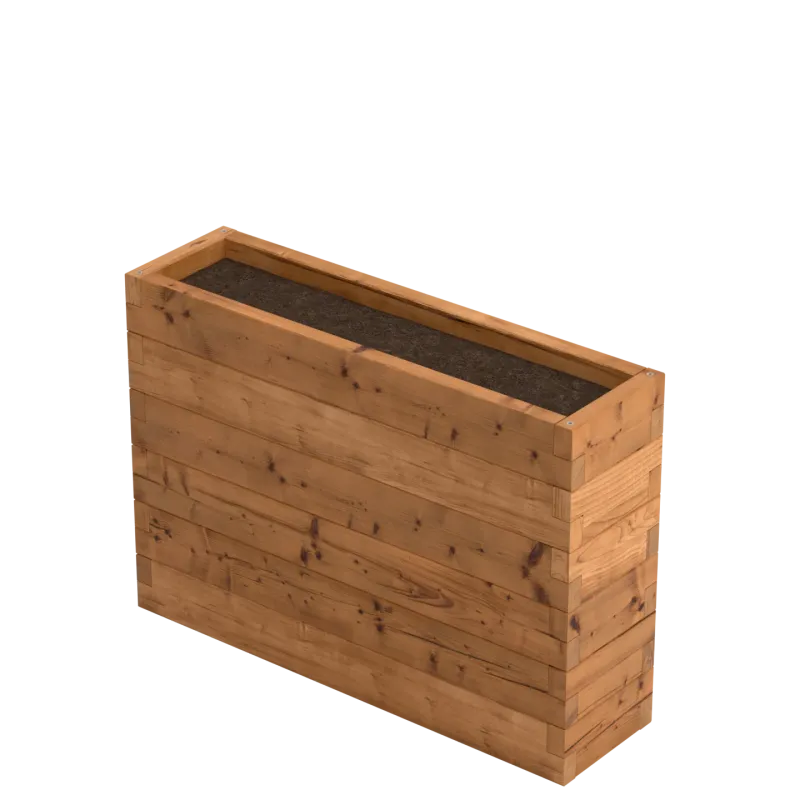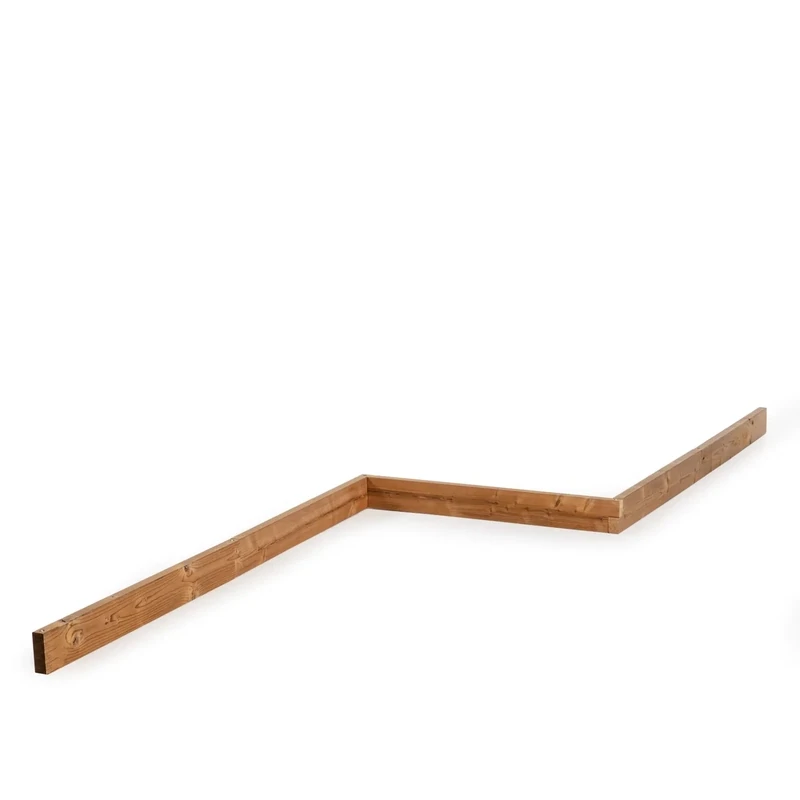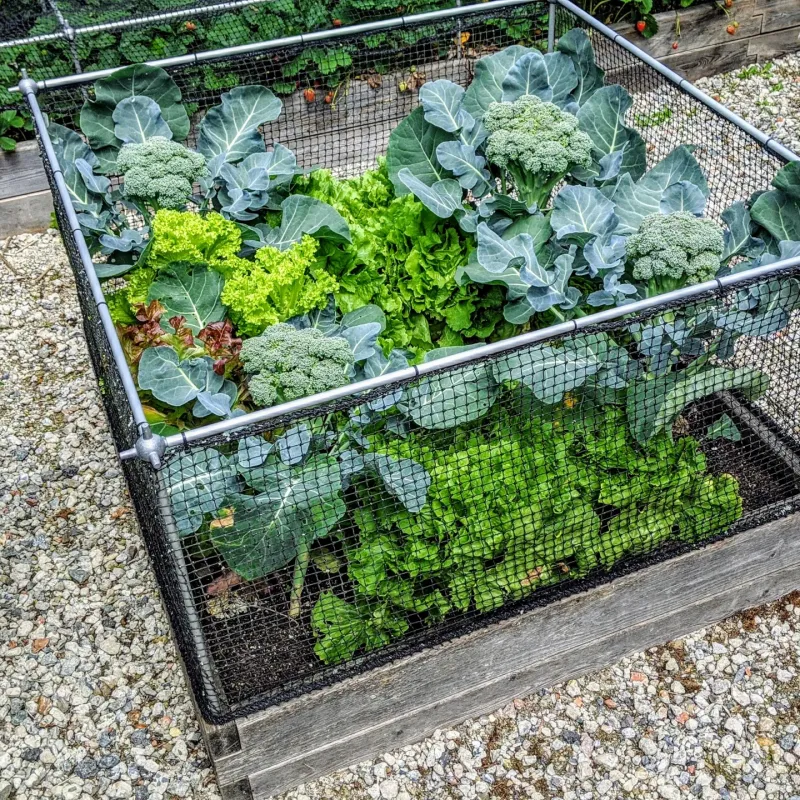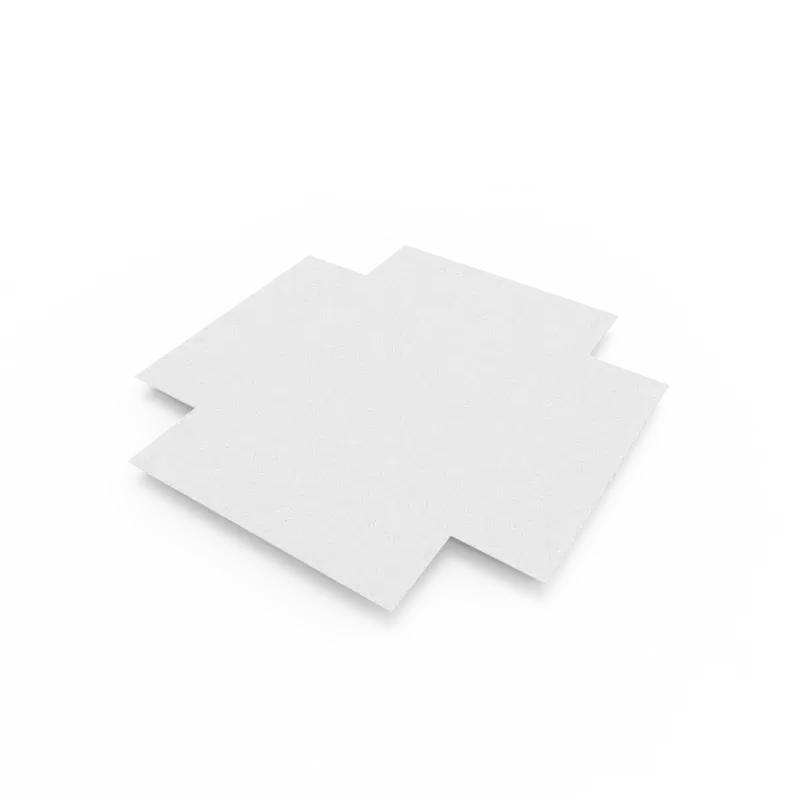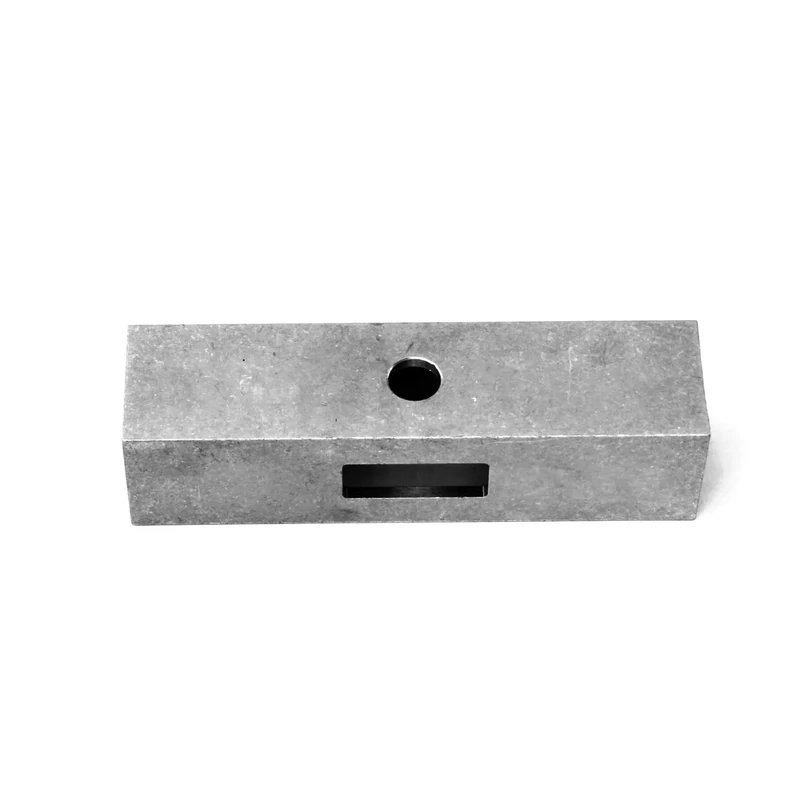PLANTER TIPS AND TRICKS
Build the perfect wooden planter or garden bed edging system in just minutes. Exactly as you want it. No measuring, sawing, drilling, or screwing! Choose from affordable ready-to-assemble kits. Made from thermally modified wood (Thermowood) with significantly improved dimensional stability and natural resistance to insects and rot. Enjoy a minimum 5-year warranty and expect a lifespan of up to 20 years.
Need an extra-long or tall planter? A unique shape? That’s easy with our modular and ultra-fast assembly method. Check out our handy planter guide featuring the most common planter shapes and sizes, along with useful tips for growing vegetables, herbs, and berries in planters. Stuck? Feel free to call us at +32 16 847 832, send an email, or use the chat button on the right-hand side of this page.
CONCEPT
Gardening in a planter is an easy, eco-friendly, and highly efficient way to grow crops in limited space. Whether in the garden, on a terrace, or on a balcony, anyone can do it, and success is almost guaranteed. Unlike the 107 cm width of our raised beds, WITBOSCH planters are only 57 or 29 cm wide, making them ideal for limited spaces.
ADVANTAGES
Growing vegetables, herbs, and small fruit in a wooden planter offers undeniable advantages:
- Complete control over soil quality (substrate) in the planters;
- Faster warming of the substrate compared to open ground, enabling earlier planting and harvesting;
- Sowing or planting vegetables and herbs in smaller, staggered batches reduces waste and monotony;
- Gardening in small spaces—even a tiny corner on a terrace or balcony suffices;
- Minimal weed growth as plants are spaced closer together;
- No more digging, weeding, etc.;
- Water, seeds, fertilizers, and pesticides are used sparingly and efficiently.
PLACEMENT
An ideal spot is south-facing, with full sun exposure and protection from wind and cold. A minimum of 5-6 hours of direct sunlight per day is essential.
Avoid areas where rainwater cannot drain or be absorbed easily. Plants dislike soggy conditions. Also, remember that small trees and shrubs will grow larger and may later cast shade.
Placing a planter near the kitchen is a great idea for quick access to fresh herbs and vegetables while cooking.
SOIL MIX
When growing vegetables and herbs in planters, it is important that the soil mix (substrate) retains water and nutrients well while maintaining a light and airy structure to promote root growth. Excellent results can be achieved with a mix of 1/3 compost, 1/3 peat, and 1/3 vermiculite.
Compost is simply decomposed and screened plant-based waste. High-quality compost can often be obtained inexpensively from local recycling centers (environmental parks). It provides essential nutrients for plants and adds structure to the soil mix. Compost releases nutrients slowly, as plants do not need all their food at once. It is an excellent alternative to chemical fertilizers from conventional retailers, eliminating concerns about under- or over-fertilizing.
Compost is absorbed by the vegetables and herbs in your planter. After each harvest, adding a few generous scoops of fresh compost is beneficial. Mix it well with the remaining substrate. Good compost is free from weed seeds, ensuring young vegetables and herbs face less competition from weeds.
Peat forms the structure of the substrate, retains moisture, and makes the mix light and airy, which is excellent for healthy root growth. Peat in your planter generally does not need to be replaced or replenished. Unfortunately, harvesting peat is not very sustainable, as reserves are gradually being depleted. As an alternative, coconut coir (coco peat) can be used.
Vermiculite, a natural mineral, provides excellent air- and water-retaining properties. Thanks to vermiculite, vegetables and herbs require less frequent watering. It can be challenging to find vermiculite in garden centers, but insulation suppliers often have it available. Always opt for the coarsest grade you can find. The vermiculite in your planter generally does not need to be replaced or replenished.
If mixing your own substrate isn’t an option, regular potting soil from garden centers can serve as an alternative. Pre-packaged potting soil is often enriched with nutrients, making additional fertilization unnecessary during the first few months. After that, regular fertilization or—better yet—adding fresh compost around new plants will be necessary.
The volume required to fill a planter can be found in the various configurations in our planter guide. Moisten the substrate regularly as you fill the planters to ensure the mix retains enough water to give plants a strong start. Fill raised beds to the top edge. The level will naturally settle by about 5 cm due to rainfall or watering.
For extra-tall planters, it is not necessary to fill them entirely with high-quality soil. Most vegetables and herbs only need about 25 cm of root depth. Discarded plastic containers can fill a significant portion of the space. Alternatively, you can fill the bottom of the planter with one part grass clippings mixed with two parts leaves or finely shredded wood. This mixture will slowly decompose into compost.
Do not add materials that may contain seeds, as this could lead to weed growth later! Cover this layer with cardboard to prevent the top layer of at least 20 cm of quality substrate from settling too quickly.
PLANTING AND SOWING
In a wooden planter, sow and plant differently than in a traditional garden: space plants closer together and avoid planting too much of the same crop. This ensures harvests are spread out, reducing waste.
Larger crops should be placed near corners or the back edges of the planter to utilize nearby space. Climbers like beans and cucumbers should be at the north side to avoid shading other plants.
ACCESSORIES
Enhance your WITBOSCH planter with a custom-fit drainage geotextile to prevent substrate from washing away on hard surfaces while allowing excess rainwater to drain freely.
Snap climbing supports like trellises or column plant supports onto the ground spikes that connect the modular wooden beams of your planter and support climbers such as clematis, cucumbers, beans, or peas. Or provide espalier trellis support for small fruit such as currants (red currants, white currants, black currants), blueberries, blackberries, and raspberries. Position climbing support and espalier trellis support always on the north side to prevent shading.
For protection against pests, choose a fruit and vegetable cage to safeguard the planter’s contents from birds, rabbits, or pets.
